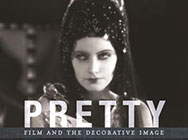|
|
|
|
Essays (book reviews) |
Rosalind Galt's |
 |
|
The Time is Ripe
Cinephiles love austerity, everything that is (as the French say) dure et pure. Clean
lines, asceticism, rigorous minimalism, dedicated simplification. There is a
word for it: exigency, the one way –
the only way – to stage, frame, shoot, edit and score something.
And it’s a matter of austerity in form as well as
content: going along with the precision and purity of the stylistic decisions,
we revel in the “workers and peasants” of Jean-Marie Straub and Daničle Huillet, the displaced
wanderers of Lisandro Alonso, the precarious
sub-proletariat of Béla Tarr or Pedro Costa or the Dardenne brothers …
It makes us feel good, somehow: it is not quite a
matter of observing the “wretched of the earth” from some safe, comfortable
distance, but rather a kind of ethical purging for the spectator, a confrontation with “bare life” and the things that really,
finally matter …
There is a reverse, negative side to this love.
Something else must be projected beyond the walls of our purified
culture-fortress, excluded, demonised. Something to be
hated! And what cinephiles tend to despise is a
certain regime of fantasy in cinema.
Oh, of course, there is some fantasy – usually of
long-ago movies – that can be easily tolerated, even indulged: Michael Powell
and Emeric Pressburger on
the stairway to heaven, Vincente Minnelli in
Brigadoon, Fritz Lang’s swashbuckling pirates in Moonfleet (1955). But that is
different. It’s not soft, sentimental, fuzzy … It is, after all, exigent,
necessary, dark, profound fantasy, a play of metaphors, a matter of life and
death!
What cinephiles hate – with
a passion – is prettiness. Useless clutter. Kitschy baroque of a type
that cannot be intellectually or philosophically redeemed. Flabby, excessively emotional, embarrassing, shameful. Soft-focus lenses and treacly, symphonic music with some single piano notes
tinkling in the foreground. Like some dreadful Nick Cassavetes rendition of a bestseller-romance novel (The Notebook, what a discredit to his
father!). Films with stuff piling up everywhere – no control, no restraint, no purity. Certain
once-promising directors have been lost to the Land of the Pretty: Wayne Wang,
for instance, from The Joy Luck Club (1993) to Snow Flower and the Secret Fan (2011): a hopeless cause!
But every few years, a book comes along that radically
redefines our sense of cinema, how it can be viewed and explored. In the course
of the 2000s so far, these books have included Gilberto Perez’s The Material Ghost and Mikhail Iampolski’s The
Memory of Tiresias. The time is ripe for Rosalind Galt’s Pretty: Film and the Decorative Image (Columbia University Press, 2011). It is a book with a razor-sharp brilliance
which, from its first page, cuts a path through sedimented, cinephilic prejudices and biases.
Pretty hones in on the bad reasons –
fear of emotion, of the feminine, of the powerfully visual, of the sexually
queer – that we so often opt for purity over excess, rigour over feeling, clean
lines over a baroque profusion of shapes and colours.
Pretty is surprising – and refreshingly
confronting – at every turn of the page. It invites us to ponder, and embrace,
an unusual, unfamiliar canon of the gloriously pretty in cinema, ranging from Baz Luhrmann and Wong Kar-wai to Derek Jarman and Glauber Rocha. Entire national or international film
cultures (such as the Latin American or Third World examples), whole cultures
or subcultures (such as camp extravagance) are redeemed, as Galt valiantly knocks
down a century or so of iconophobic resistances to
visual and auditory pleasure in cinema.
It is also a deeply political book. Personal, communal
and national identities are formed in and around what is pretty, what is nice,
what is pleasant. Some popular music aficionados have
long accepted this fact of cultural history; film aesthetes have held out
longer against what they perceive of as the demons of kitsch, cliché, the
“poster image” (Serge Daney’s great anti-pretty
lament) and merely “beautiful cinematography”, whether in Luc Besson or Bernardo Bertolucci.
There is too much beauty, of a non-puristic kind, that we have too deeply repressed. Let it out, cinephiles!
– and embrace all that is pretty.
© Adrian Martin November 2011 |
![]()